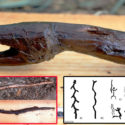These Eight Mysterious Ancient Arts Seem To Prove The Ancient Astronaut Theorists Right
1. Painting In The Cave Of Pech Merle, France
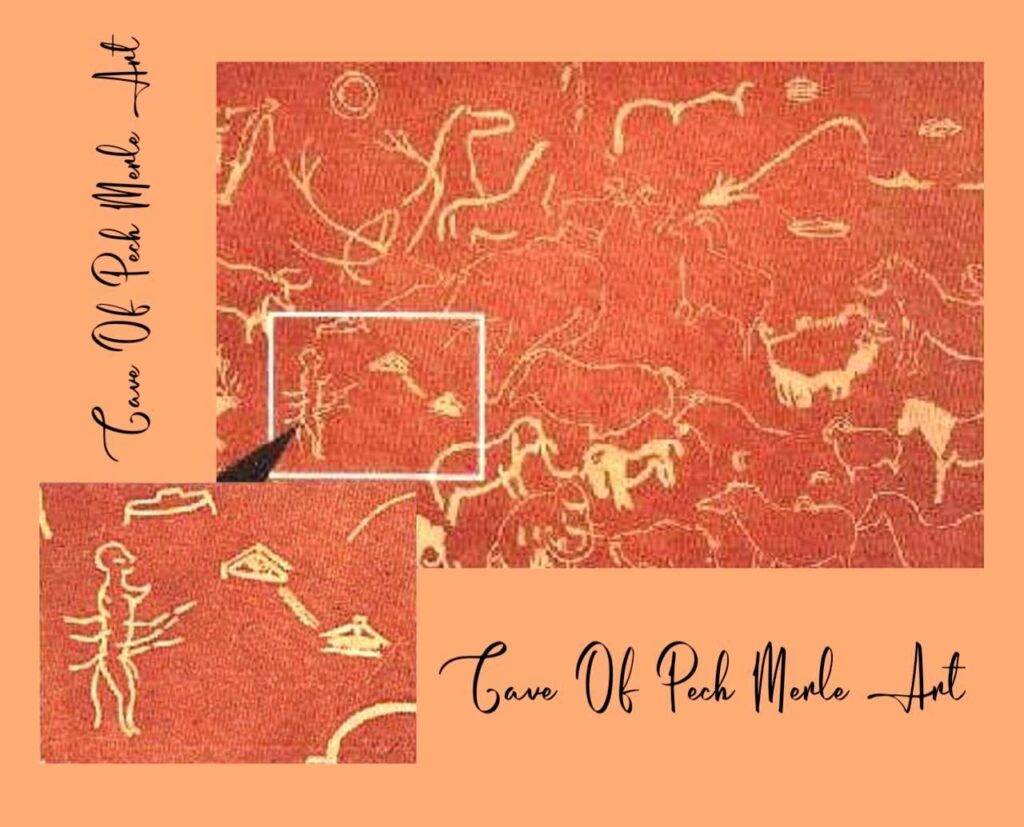
The drawings in the cave of Pech Merle near Le Cabrerets in France depict a field of different wild animals, amidst which there is a strange-looking humanoid structure that has limbs and a tail. There is no reason to believe that this figure was imaginative, as all the other animals seen in the drawing can be recognized. Three flying objects are also seen in this drawing that was drawn about 17000 to 19000 years ago.
2. Niaux Caves Arts, France
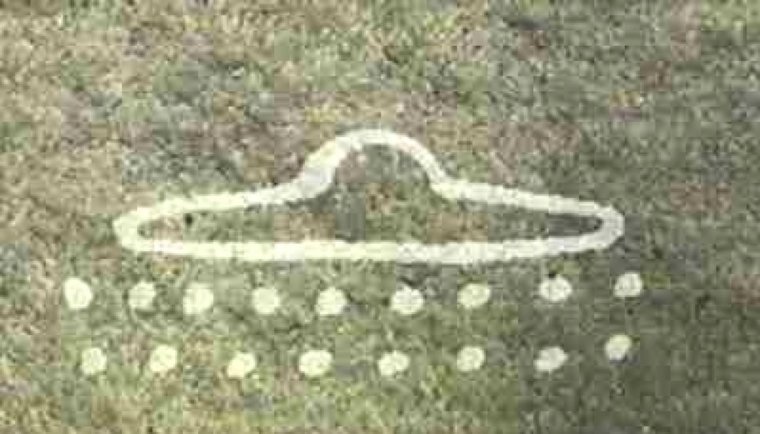
What looks exactly like an outline diagram of a spaceship as seen in sci-fi movies is a cave drawing found in the Niaux caves of France. This Paleolithic cave painting was drawn sometime between 13,000 BCE and 10,000 BCE.
3. Val Camonica Cave Paintings, Italy
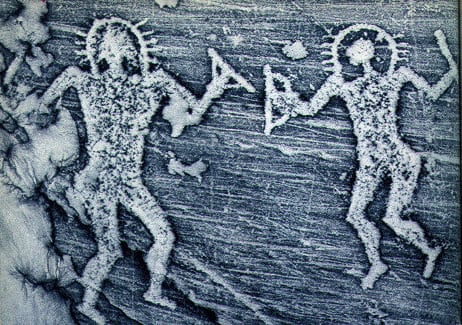
One drawing of many in Val Camonica shows human or humanoid figures with what look like halos around their entire heads. Some lines may represent light coming out from these circles. Apart from this, there are many other rock drawings estimated to date back sometime around 10,000 BCE. They also instead resemble men in spacesuits or old-school scuba gear. Either would be rather strange. Proponents of the ancient alien theories say these are early depictions of foreign visits.
4. Sego Canyon Petroglyphs, Thompson, Utah
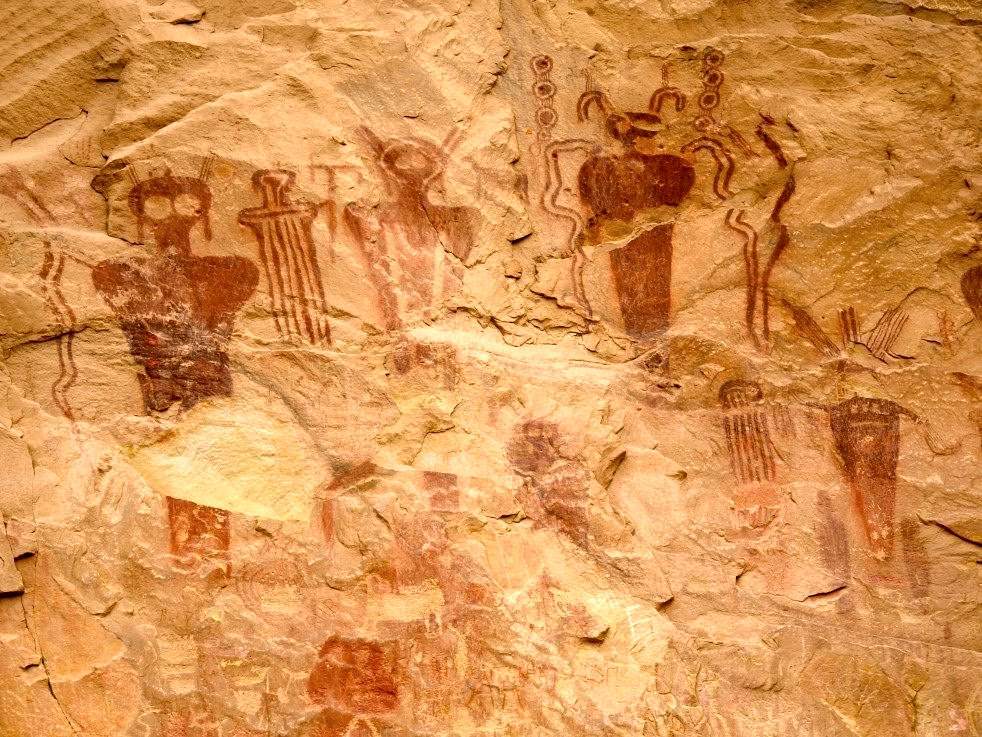
The Sego Canyon petroglyphs in Thompson, Utah, are the perfect example of ancient rock arts. The site has skills from at least three native cultures spanning nearly 8,000 years. Some of these pieces are clearly of buffalo, horses, and white men. Others are a bit more bug-eyed and oddly shaped. These are what many believe are drawings of ancient aliens. Some of these strange drawings have been dated to 6000 BCE.
5. Tassili n’Ajjer Arts, Sahara desert, Algeria
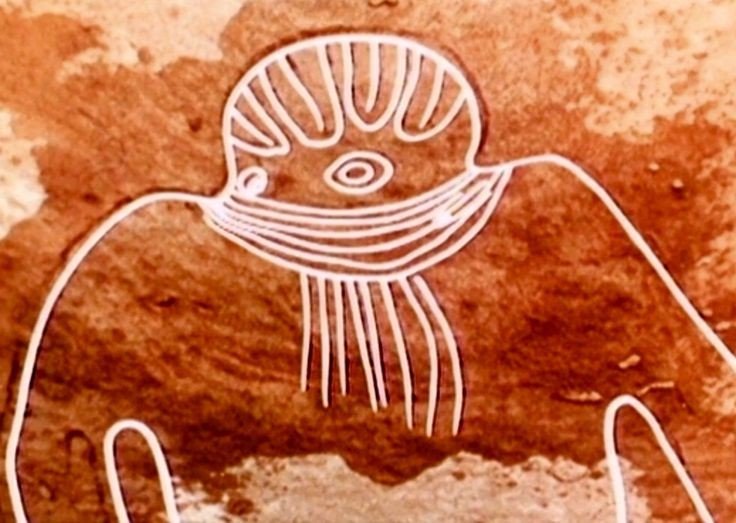
These figures also do not look like humans. In the first picture, notice the same halo-looking object around the head that we see in some other paintings from other parts of the world. These cave paintings are from Tassili, the Sahara Desert in North Africa. These two paintings date back to 6000 BCE and 7000 BCE, respectively.
6. Wandjina Rock Arts, Kimberley, Australia
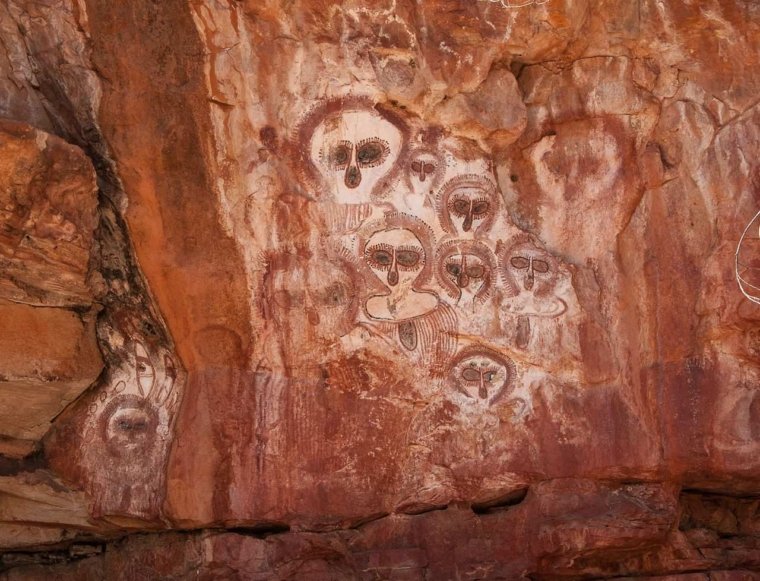
The Wandjina Rock Art in Australia is the best example of ancient aliens in art on the continent. These cave paintings date back to approximately 3,800 BCE. There are certainly some big-eyed, oddly shaped humanoids in these works of art. These were essential paintings to Aboriginals, who freshened the paint so often that some areas had dozens of layers of paint. These are some of the most ancient images in Australia of what the local Aborigines call the Wandjina, the spirit of weather. The question is whether these paintings depict aliens.
7. The Helicopter Hieroglyphs, Temple Of Seti I, Egypt

The magnificent great Pyramids of Giza are popular fodder for conspiracy theories, and the whole of the ancient Egyptian civilization has in one way or another been linked to bizarre alien conspiracies. But one of the most convincing bits of evidence aliens has helped raise the ancient culture is a set of unusual hieroglyphs in the 3,000-year-old Temple of Seti in Abydos, Egypt.
Among conspiracy forums, the icons have become known as the “Helicopter Hieroglyphs” for supposing day showing eerie pictures of what appears to be a helicopter and futuristic aircraft. The mainstream archaeologists say the icons are the simple result of typographical errors. However, many have claimed they were left behind by time travelers, while the Ancient Astronaut Theorists suggested they were left to honor alien visitors.
8. The Sarcophagus Lid Of Mayan King Pacal
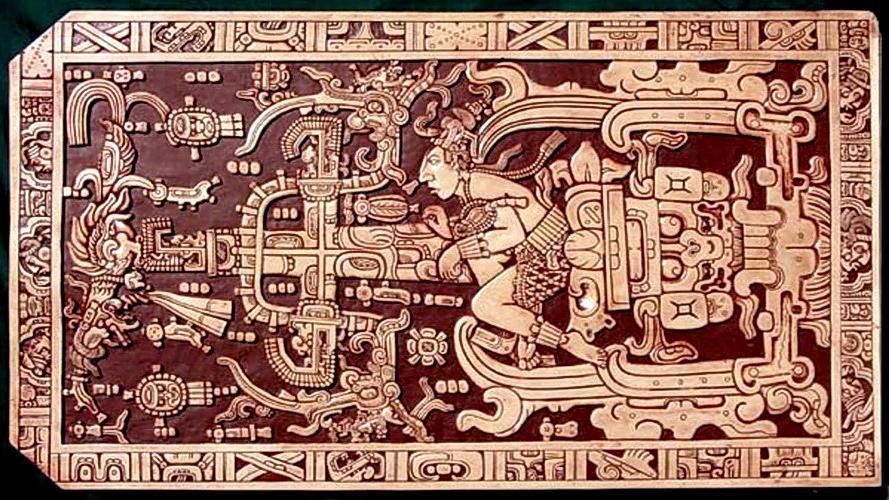
Ancient Mayan artwork is known for its intricately detailed weaving and geometric designs. The sarcophagus lid of the Mayan king Pascal, made in the 7th century AD, is a testament to the Mayan’s prowess. However, the 1968 book Chariots of the Gods, by Erich von Däniken, has pointed out that far from being an incredibly great coffin, the sarcophagus contains references to alien UFOs.
According to Mr von Däniken, the central figure in the middle of the casket is an extraterrestrial alien riding what appears to be a rocket or some spaceship control center. He wrote: “In the center of that frame is a man sitting, bending forward. He has a mask on his nose, he uses his two hands to manipulate some controls, and the heel of his left foot is on a kind of pedal with different adjustments. The rear portion is separated from him; he is sitting on a complicated chair, and outside of this whole frame, you see a little flame like an exhaust.”
– Saqqara Bird, Egypt
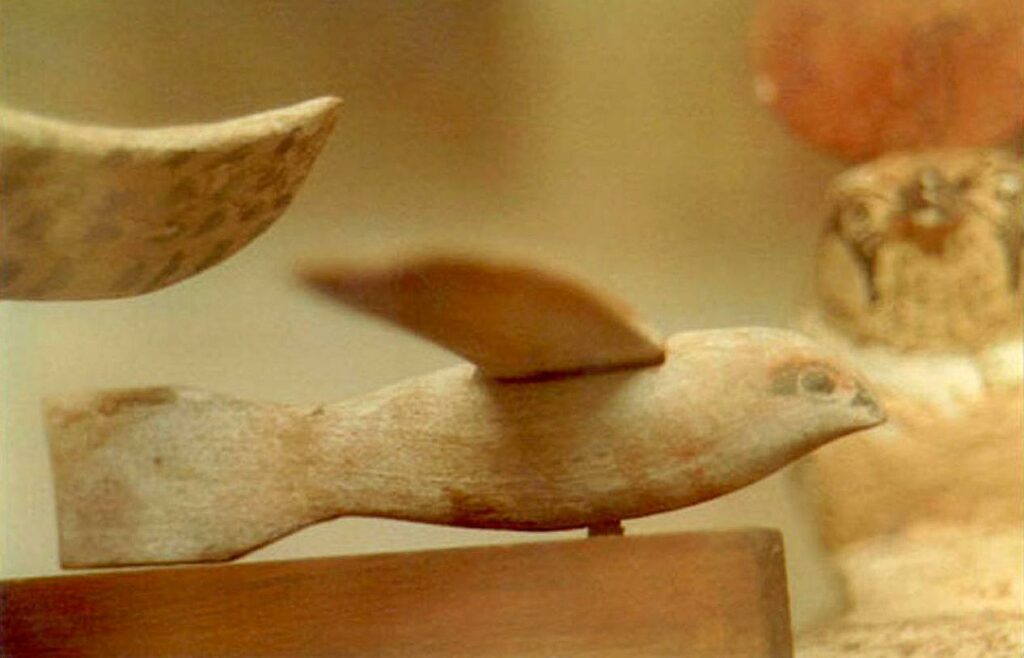
The so-called Saqqara Bird is a sycamore carving of a bird of no known species. According to theories, it could be a toy, a ceremonial object, or even a weather vane. Now, the ancient alien approach surrounding this bird from 220 BCE is two-fold. Firstly, some believe the carving is representative of old aviation technology. Take that one step further, and aliens are the ones who offered that technology to humans. Is this possible?
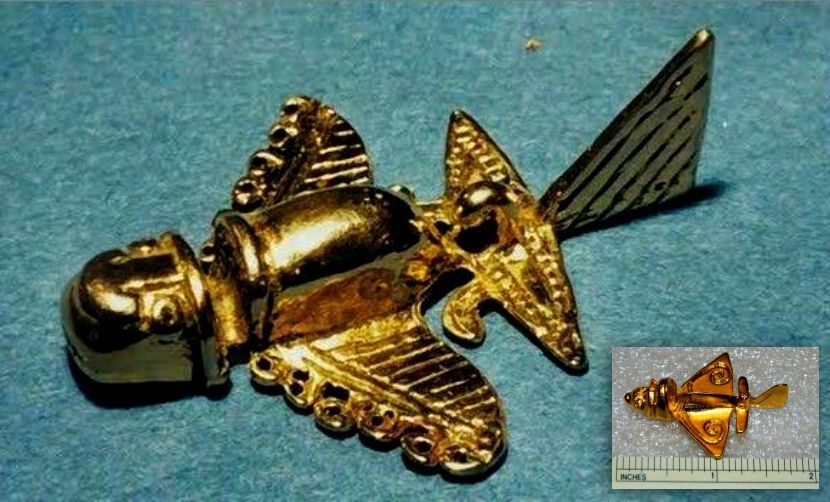
These ancient Egyptian and Pre-Colombian small models look more like a flying craft or airplanes than a bird or a fish. In every model, the aspect ratios of wings, fuselage, tail, etc., are so perfect that engineers can create similar models in larger versions and fly them into the sky. However, lighter than air flight wasn’t accomplished until the 1780s. So, how did ancient civilizations know enough about flying to make models and sketches of flying machines?


